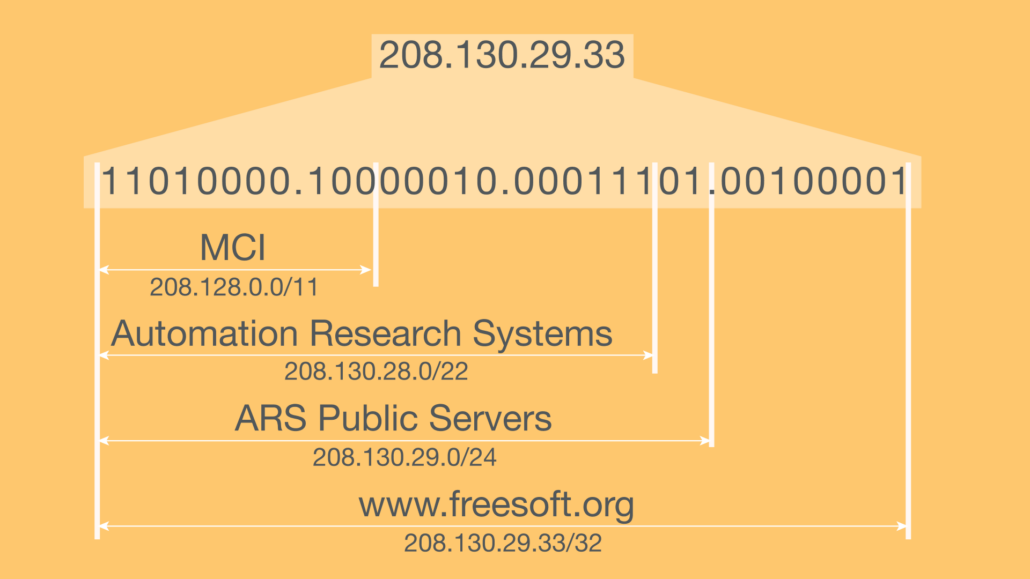Unpacking CIDR: The Evolution of IP Addressing
01 September 2022CIDR, or Classless Inter-Domain Routing, marks a significant leap forward in the management of IP addresses. Designed to mitigate the rapid depletion of IPv4 addresses, CIDR revolutionized IP address allocation, enhancing efficiency and significantly expanding availability. Understanding the impact of CIDR necessitates a look back at the technology it replaced.
Before CIDR: The Era of Class-based IP Allocation
By the early 1990s, it became apparent to Internet engineers that IPv4 addresses were nearing exhaustion. Traditionally, IP addresses were distributed in fixed block sizes, categorized into Classes A, B, and C, with each class catering to different scale needs—from 256 addresses in Class C to a staggering 16,777,216 in Class A. This system, while functional, was neither efficient nor sustainable, leading to the innovative development of CIDR.
CIDR introduced a more flexible and efficient method of IP address summarization, extending the lifecycle of IPv4 and setting a new standard for IP address management. This strategic shift towards a classless system underscored the tech industry’s capacity for innovation in the face of looming challenges, embodying the fast-paced, data-driven ethos that continues to drive technological advancement today.
Understanding IPv4 Address Anatomy:
- 192.0.2.16 or 11000000000000000000001000010000
The left format, known as “dotted decimal” or “dotted quad” notation, represents each segment as a base-10 number ranging from 0 to 255. Conversely, the right format displays the same numeric value in binary.
The initial address, or network number, conventionally ends in zero in dotted decimal notation[1]. (For Class C subnet variations, like 192.0.2.32/27, the ending number may differ, allowing for a limited number of network assignments. However, registry allocations never fall below the Class C minimum). The class of an IPv4 address is determined by its leading bits in binary: Class A (first bit 0, spanning 0.0.0.0 – 127.255.255.255), Class B (initial two bits 01, covering 128.0.0.0 – 191.255.255.255), and Class C (first two bits 11, ranging from 192.0.0.0 – 223.255.255.255). Classes D and E were earmarked for multicast and experimentation, respectively, and are not commonly used.
Given the finite number of Class A (128 possible) and Class B (65,536 possible) addresses, the early 1990s saw a clear need for more granular allocations. This necessity led to the dismantling of the class-based system in favor of a classless approach to address allocation.
In this evolving landscape, it’s imperative to understand the structure and classifications of IPv4 addresses to navigate the tech world effectively. The transition to a classless system illustrates the industry’s response to growing demands and its commitment to innovation and efficient resource management.
Classful vs. Classless IP Addressing: A Technical Breakdown
In the fast-evolving tech landscape, understanding the difference between Classful and Classless IP addressing is crucial for network professionals.
Classful addressing offers a straightforward method of identifying network classes directly from the IP address: Class A is recognized by its first byte (10.0.0.0), Class B by the first two bytes (172.16.0.0 and 172.17.0.0 as examples of distinct Class B networks), and Class C by the first three bytes (192.186.1.0 and 192.186.2.0 serving as indicators of separate Class C networks).
On the flip side, Classless addressing introduces a layer of flexibility by permitting any of the 32 bits to define a network block, signaling a significant shift from the rigid structure of Classful addressing.
IP Addressing in Practice: 192.0.2.16
When we dissect the IP address 192.0.2.16 (binary: 11000000.00000000.00000010.00010000) within a Classless /24 network, the initial 24 bits pinpoint the network segment, reserving the remaining 8 bits for host addresses within that network, thus defining the network as 192.0.2.0/24. This range stretches from 192.0.2.0 to 192.0.2.255, delineating the network’s boundaries.
Contrastingly, under a /20 network, the dynamic changes:
- The network’s reach expands to 192.0.0.0/20, enlarging the addressable span to cover from 192.0.0.0 to 192.0.15.255.
This comparison highlights the superior flexibility and precision of Classless addressing in network definition and administration, reflecting the sophisticated demands of contemporary networking environments.
Key Addresses Within the /20 Network:
- 192.0.0.0 – The network’s starting point.
- 192.0.2.16 – An example address within the network.
- 192.0.13.127 – Demonstrates the network’s capability to support numerous addresses.
- 192.0.15.255 – The upper boundary of this network segment.
Subnetting is a critical process in optimizing network performance and efficiency. The /20 network can be effectively segmented as follows:
Subnetworks within 192.0.0.0/20:
- 192.0.0.0/21
- 192.0.8.0/21
Alternative Subnetting Scheme:
CIDR Optimization
CIDR revolutionizes IP address allocation, enabling engineers to subdivide a single IP address into multiple efficient subnets, thereby conserving address space. CIDR notation consists of two key components:
- Prefix: The binary equivalent of the network address, akin to a standard IP address.
- Suffix: Indicates the total bit count of the address.
For instance, a CIDR notation like 192.168.125.23/16 signifies a network with 16 bits, optimizing the allocation of IPv4 addresses, which are limited to 32 bits. Importantly, CIDR is also applicable to IPv6, with common prefixes including /64, /48, and /32, extending up to 128 bits.
Leveraging CIDR for Supernetting
CIDR’s supernetting capability allows corporations to streamline network management. By aggregating disparate subnets — from /27s through to /23s — into a single /22 supernet, organizations enhance network efficiency. Even homes assigned a single /32 network by ISPs benefit from this summarization, often represented as /16 networks at the ISP level.
Takeaway
CIDR represents a strategic approach to maximizing IPv4 resource utility. For a deeper dive into IPv4 versus IPv6 nuances or strategies for network renumbering and IPv4 asset optimization, our experts offer cutting-edge insights. Contact us to future-proof your network assets today.
◼️


 2024
2024